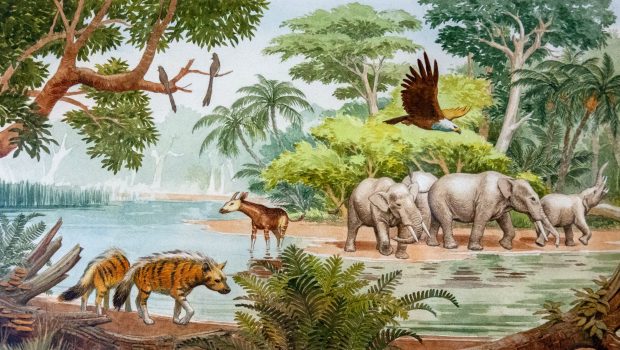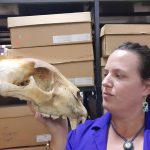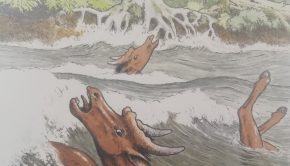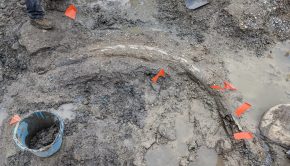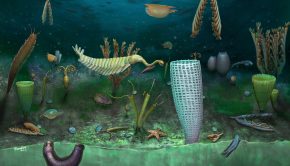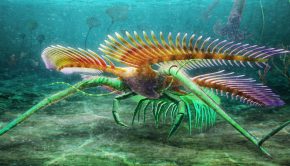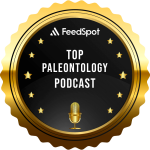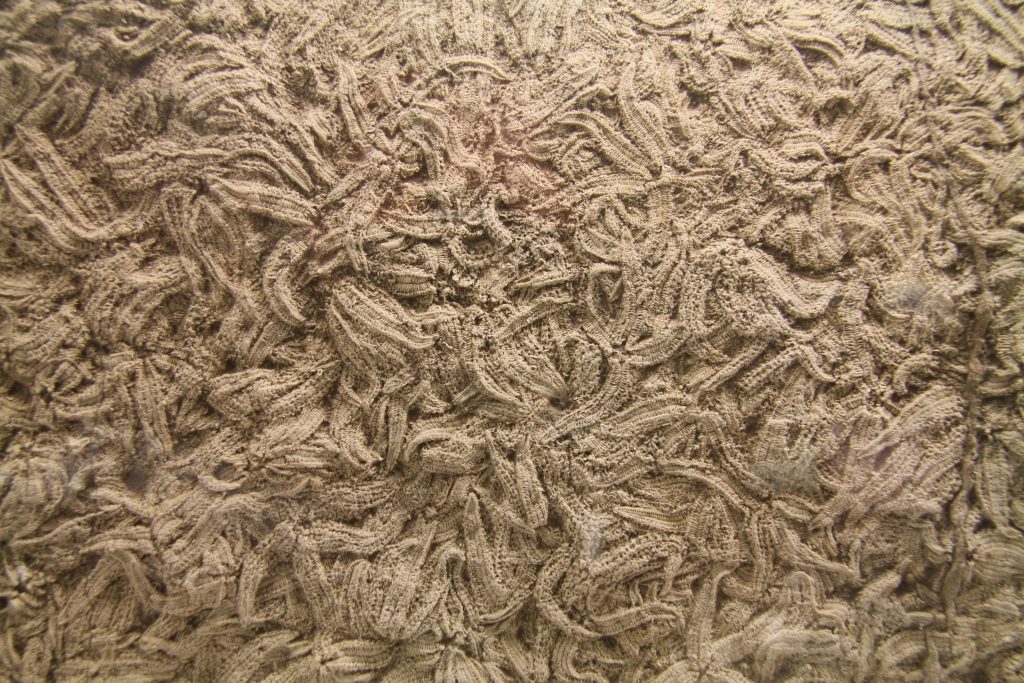Langebaanweg – A Cenozoic treasure trove in South Africa
Near a small coastal town on the west coast of South Africa, amid rolling dunes and fynbos vegetation lies a palaeontological gem. The site is called Langebaanweg, named for the nearby town, Langebaan. A word believed to derive from Dutch for the long strip of calm water created by the saltwater lagoon, which characterises this part of the coast. There are a lot of things that make Langebaanweg special, its age, its rarity, its extraordinary productivity and its long research history. In this multi-part feature, we will explore why more people should know about the site, the things we have learned from it, and the many avenues of research that remains untouched.
But first, some history.
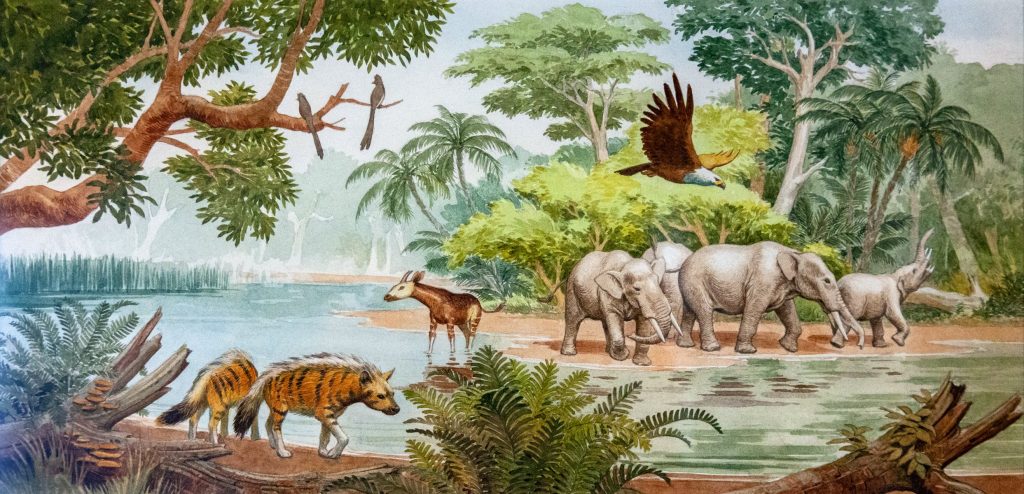
A Time of Great Change
Langebaanweg preserves deposits spanning from the Middle Miocene all the way to the Holocene. But the most fossiliferous layers are dated to the Mio-Pliocene transition, 5.2 Million Years ago (to be specific). This is a period of fundamental climatic and environmental change and one that is poorly preserved in Southern Africa.
During this period global temperatures were falling, taking sea levels with them. There was increased aridity and rain was falling more seasonally. In Africa, tropical forests were giving way to grasslands. Leading to a turnover of animal species. It’s a time when we start to see the animal families, if not the species, we are familiar with on the African landscape. We know it was a period of intense global change, but we don’t know the mechanics of exactly how those changes occurred.
Langebaanweg is not only one of the few sites in the world to cover this period, but does so with incredible preservation. It is a window into a lost time.
Pretty Rocks and Unexpected Discoveries
One thing you need to know about Langebaanweg is that the surface sediments are all Holocene aged. The good stuff, the Pliocene deposits, are 20 m below the surface. The site was only discovered because it started life as a mine. First established in 1942, the mine was extracting phosphate for use as fertiliser. By 1974, it was producing 250 000 metric tons of the stuff. Indeed, researchers at the site have lamented how much of the fossil treasures at Langebaanweg may have been destroyed in the mine mills.

In the late 1950s Ronald Singer of the University of Chicago with some colleagues, visited the mine to see if anything interesting was being recovered. The story goes that while having tea with the mine superintendent, the researchers asked if anyone had seen any bones or fossils. The man professed not to have seen or anything like what the scientists were describing. But he was inspired to show them his collection of ‘petty rocks’ in a cabinet in his office. And sitting there on the shelf was a mammoth tooth. A highly excited Singer took the rocks off to Cape Town and the first publication from the site followed in 1958, of a Stegolophodon molar (later reassigned to Mammuthus subplanifrons). Singer and colleagues from the Iziko Museum in Cape Town followed up with surface prospecting and short field trips in the 1960s. These early studies continued to produce fossil material that had (at that time) not been previously found in southern Africa and sometimes not on the continent at all.
The real hey-day for Langebaanweg was to come in the 1970s when Dr Brett Hendey of the Iziko Museum in Cape Town took over the site. This coincided with ramping up of the mining activities and the opening of more fossiliferous deposits. Hendey ran numerous field seasons throughout the decade, uncovered uncountable species, and published dozens of papers describing new species or new representations of known species. All while working in an active mine, coordinating with the managers to work on sites before they were excavated or backfilled. His efforts alone are why the site came to garner any attention at all. Hendey focused his fieldwork on rescuing fossil material, so that by the end of his tenure at the museum there were in excess of one million specimens from this site alone. We are still playing catchup to get this backlog analysed and described and many potential new species are hidden away in boxes in the museum’s collection.
A New Identity and a Bonebed
By the 1990s phosphate mining was no longer profitable (at such a large scale) and the mining company was looking to divest itself of the mine. The decision was made to donate the quarry land (over 600 hectares) and a lump sum endowment for the preservation of an important site and the creation of a visitors and learning centre, named the West Coast Fossil Park. In 2014 it achieved heritage status.
A valuable handover like this required a prestigious ribbon cutting event with a government minister. In the run-up to the opening archaeologists were invited to the site and asked to find some nice bones that could be displayed to the guests. Fieldworkers will tell you how impossible a demand this is, like looking for a needle in a haystack while blindfolded. But the researchers persevered, and in a locality alongside one of Hendey’s previous excavations a bed of staggering bone density was discovered. Shuffling in another decades worth of excavations and research.
The bonebed, covering some 80 m2, remains partially excavated and on display to the public. It contains both isolated bones and partially articulated skeletons. There are terrestrial, freshwater and marine fossils. Microfauna and megafauna all jumbled together. The depositional origins of the deposit remain a matter of debate and the site still holds many secrets.
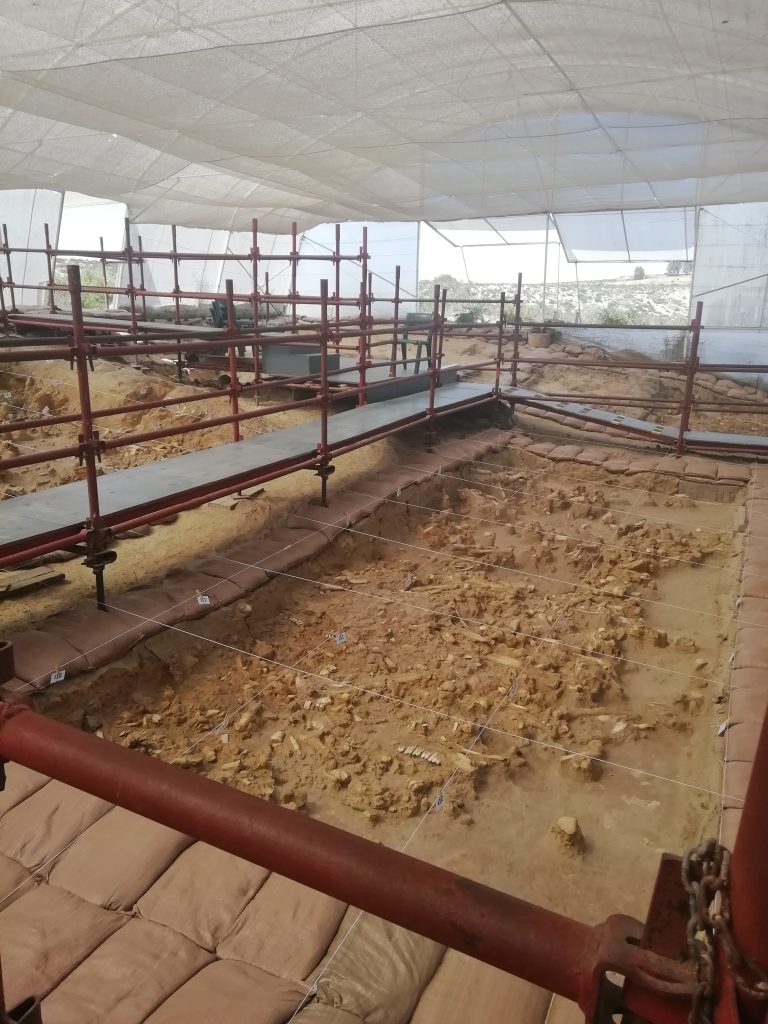
The quarry at Langebaanweg remains a phenomenally rich site, with a surface covered in isolated fossil fragments. While its massive collections have only been brushed superficially in research. The Fossil Park focusses its work on education and outreach but remains an active participant in ongoing research efforts at the site and the scope for future work remains staggering.
In the next instalment we will discuss the geology and palaeoecology of the site and in the final features we will take a brief look at some of the remarkable fossil finds.
Some key references:
Hendey, Q.B., 1981b. Palaeoecology of the late Tertiary fossil occurrences in E’ Quarry, Langebaanweg, South Africa, and a reinterpretation of their geological context. Annals of the South African Museum, 84(1), pp. 1–104.
Hendey, Q.B., 1982. Langebaanweg: A Record of Past Life. South African Museum, Cape Town.
Roberts, D.L., Matthews, T., Herries, A.I.R., Boulter, C., Scott, L., Dondo, C., Mtembi, P., Browning, C. 2011. Regional and global context of the Late Cenozoic Langebaanweg (LBW) palaeontological site: West Coast of South Africa. Earth-Science Reviews, 106 (3–4), pp. 191–214. Singer, R. & Hooijer, D.A., 1958. A Stegolophodon from South Africa. Nature, 4628, p.101.
Brigette Cohen was formerly a palaeontologist and museum scientist until she decided that academia didn’t suit her. Now she works as a science writer. Translating academic mumbo-jumbo into fascinating stories of past life on earth. South African born and raised, she is particularly keen on seeing the incredible palaeontology of Africa being shared. You can find more of her work here.

